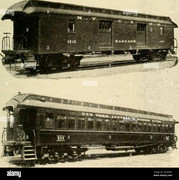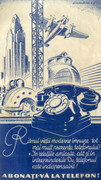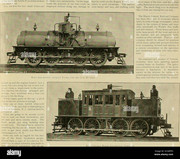| It is currently Tue Apr 16, 2024 8:13 am |
|
All times are UTC - 5 hours [ DST ] |
A few questions
Moderators: Rick Rowlands, tomgears, Randy Hees
 
|
Page 26 of 28 |
[ 411 posts ] | Go to page Previous 1 ... 23, 24, 25, 26, 27, 28 Next |
|
| mmi16 |
|
||
|
Joined: Thu Oct 24, 2019 11:05 pm Posts: 142 |
|
||
| Overmod |
|
||
|
Joined: Thu May 24, 2012 1:37 pm Posts: 2230 |
|
||
| Dennis Storzek |
|
||
|
Joined: Thu Aug 26, 2004 2:50 pm Posts: 2815 Location: Northern Illinois |
|
||
| EJ Berry |
|
||
|
Joined: Fri Dec 22, 2017 6:47 pm Posts: 1403 Location: Philadelphia, PA |
|
||
| djl |
|
||
|
Joined: Thu Sep 03, 2020 1:51 pm Posts: 167 Location: Bucureşti, Capitala României / Bucharest, Capital of Romania |
|
||
| PaulWWoodring |
|
||
|
Joined: Fri Aug 27, 2004 4:02 pm Posts: 1745 Location: Back in NE Ohio |
|
||
| Dennis Storzek |
|
||
|
Joined: Thu Aug 26, 2004 2:50 pm Posts: 2815 Location: Northern Illinois |
|
||
| djl |
|
||
|
Joined: Thu Sep 03, 2020 1:51 pm Posts: 167 Location: Bucureşti, Capitala României / Bucharest, Capital of Romania |
|
||
| EJ Berry |
|
||
|
Joined: Fri Dec 22, 2017 6:47 pm Posts: 1403 Location: Philadelphia, PA |
|
||
| djl |
|
||
|
Joined: Thu Sep 03, 2020 1:51 pm Posts: 167 Location: Bucureşti, Capitala României / Bucharest, Capital of Romania |
|
||
| EJ Berry |
|
||
|
Joined: Fri Dec 22, 2017 6:47 pm Posts: 1403 Location: Philadelphia, PA |
|
||
| djl |
|
||
|
Joined: Thu Sep 03, 2020 1:51 pm Posts: 167 Location: Bucureşti, Capitala României / Bucharest, Capital of Romania |
|
||
| Overmod |
|
||
|
Joined: Thu May 24, 2012 1:37 pm Posts: 2230 |
|
||
| djl |
|
||
|
Joined: Thu Sep 03, 2020 1:51 pm Posts: 167 Location: Bucureşti, Capitala României / Bucharest, Capital of Romania |
|
||
 
|
Page 26 of 28 |
[ 411 posts ] | Go to page Previous 1 ... 23, 24, 25, 26, 27, 28 Next |
|
All times are UTC - 5 hours [ DST ] |
Who is online |
Users browsing this forum: bigjim4life, Google [Bot], jvliet, Majestic-12 [Bot] and 43 guests |
| You cannot post new topics in this forum You cannot reply to topics in this forum You cannot edit your posts in this forum You cannot delete your posts in this forum You cannot post attachments in this forum |



